Subdivisions of Shireroth
The Imperial Republic of Shireroth is governed through a number of subdivisions, of which the Prefecture (in the past the Duchy or Imperial Dominion) is the largest administrative unit. For long, those were often informally referred to as Imperial States. The Prefectures are in most cases further divided in a number of Provinces (which could be locally be referred to as Counties, Circles or Districts). Each territory retains a strong cultural identity, which place them sometimes at odds with central authorities in Shirekeep. The balance of power between the Imperial Government and the regional administrations has been a recurring theme in Shireroth’s political history.
Subdivisions
- See also: 1715 Shireroth census
The Imperial Prefectures, governed by a Prefect in name of the Kaiser, are in turn divided in a larger number of smaller, easier to rule, subdivisions. Depending on the Prefecture, these second-level were originally subdivisions governed by Counts, Barons,... according to the feudal ways of the past, or by governors who were - or were not - appointed or even elected by the people or local assemblies. Nowadays the second-tier are Provinces, governed by appointed Governors. Since the reign of Ayreon V, the structure was streamlined and both Prefects and Governors are appointed by the Throne.
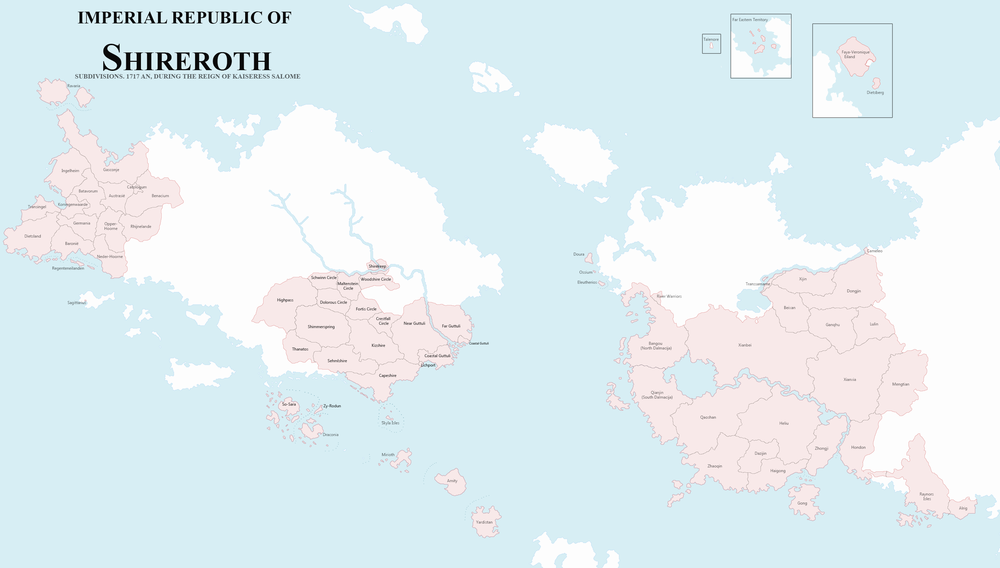
Shireroth counts 23 Prefectures, 1 Protectorate and 95 Provinces in total.
| Geographical Region | Prefecture | Province | |
|---|---|---|---|
| Central Benacia | 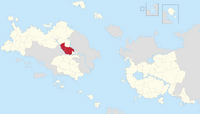
|
Alalehzamin | Blue Alalehzamin |
| Lesser Zjandaria | |||
| Miyân-Rudân | |||
| Greater Elwynn | 
|
Amokolia | Automatica |
| Highbloom | |||
| Mishalan | |||
| Oleslääd-Svensland | |||
| Greater Kildare | 
|
Audentior | Alrig |
| Hondon | |||
| Qianxi | |||
| Raynor's Isles | |||
| Xilin | |||
| Western Benacia | 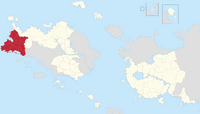
|
Batavia | ‘s Koningenwaarde (Hoofdstedelijk Gewest ) |
| Austrasië | |||
| Baronië | |||
| Batavorum | |||
| Catologum | |||
| Dietsland | |||
| Germania | |||
| Ingelheim | |||
| Neder-Hoorne | |||
| Opper-Hoorne | |||
| Regenteneilanden | |||
| Transingel | |||
| Greater Kildare | 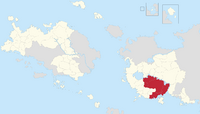
|
Blackrock | Haigong |
| Heliu | |||
| Tanlin | |||
| Yunnan | |||
| Zhongji | |||
| Central Benacia | 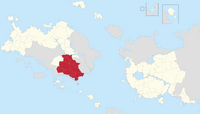
|
Brookshire | Capeshire |
| Crestfall | |||
| Dolorous | |||
| Fortis | |||
| Kizshire | |||
| Maltenstein | |||
| Schwinn | |||
| Sehmlshire | |||
| Shimmerspring | |||
| Skyla Isles | |||
| Thatanos | |||
| Greater Kildare | 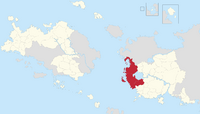
|
Dalmacija | Shaanxi |
| River Warriors Province | |||
| Qianjin (South Dalmacija) | |||
| Carolgongyan | |||
| Bangou (North Dalmacija) | |||
| Shirerithian Isles | 
|
Khaz Modan | Zy-Rodun |
| So-Sara | |||
| Draconia | |||
| Western Benacia | 
|
Francia | Absentia |
| Benacium | |||
| Rhijnelande | |||
| Western Benacia | 
|
Gascony | Gasconje |
| Ravaria | |||
| Yseland | |||
| Greater Kildare | 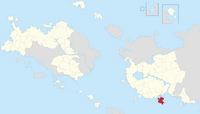
|
Gong | Beigong |
| Nangong | |||
| Xiaogong | |||
| Central Benacia | 
|
Highpass | Highpass |
| Central Benacia | 
|
Imperial County | Shirekeep |
| Woodshire | |||
| Greater Kildare | 
|
Jingdao | Zijin |
| Zijinlin | |||
| Greater Kildare | 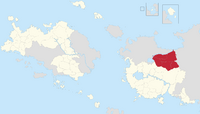
|
Jinkeai | Trans-Samarne |
| Beixan | |||
| Xijinkeai | |||
| Dongjinkeai | |||
| Ganqhu | |||
| Lulin | |||
| Camoleo | |||
| Greater Kildare | 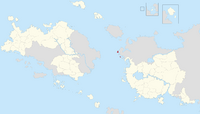
|
Kezan | Doura |
| Eleutherios | |||
| Ossium | |||
| Greater Kildare | 
|
Kildare | Anhui |
| Hailing | |||
| Heilong | |||
| Qaoshan | |||
| Yilhui | |||
| Greater Elwynn | 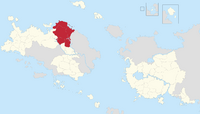
|
Upper Elwynn | Agnesia |
| Araxion | |||
| Cape Farewell & Illumination | |||
| Cimmeria | |||
| Iserdia | |||
| Utasia | |||
| Greater Kildare | 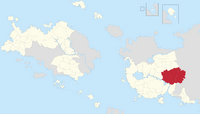
|
Outer Antya | Mengtian |
| Xianxia | |||
| Greater Elwynn / Keltia /
Greater Kildare / Greater Elwynn |
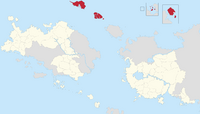
|
Periphery | Batavian Antillen |
| Far Eastern Territory | |||
| Leng | |||
| Raikoth | |||
| Shirerithian Isles | 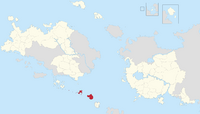
|
Sathrati | Amity |
| Mirioth | |||
| Sabatini | |||
| Central Benacia | 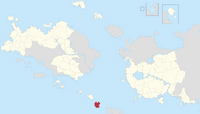
|
Yardistan | Grifonašja |
| Nordašja | |||
| Sentratera-Rantsilasta | |||
| Skerry Isles | 
|
Protectorate of Talenore | |
Former subdivisions
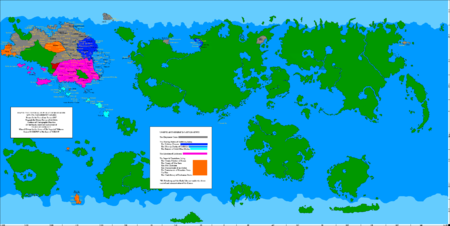

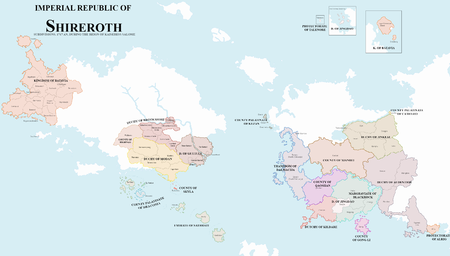
Until administrative reforms were introduced in 1742 AN, the Duchies - and later under the name Imperial States and Imperial Dominions - were the largest subdivisions possible. Prior to the Kalirion Fracture, those were divided into Baronies and further into Counties along old feudal lines. They are generally ruled by a Duke. An exception is the Kingdom of Batavia, the protectorates and territories which are ruled directly by the Golden Mango Throne or received a special status. Post-War, a noble title was no longer linked to govern a territory. Instead power over the Prefecture was in hands of a Prefect, while the Provinces were governed by a Governor. Those functions were appointed by the Golden Mango Throne, with nobility as requirement.
Former Duchies and States
- Qyzylqaystan (short, between 1710 - 1711)
- Yardistan
- Elwynn (previously Froyalan)
- Straylight
- Arminy
- Antica
- Goldshire (Northshire)
- Lothlaria
- Imperial County of Shirekeep and Skyla
- Kingdom of Batavia
- Duchy of Brookshire
- Duchy of Kildare
- Duchy of Modan
- Duchy of Guttuli
- Duchy of Jingdao
- Duchy of Jinkeai
- Duchy of Outer Antya
- Duchy of Raynor's Isles
- Protectorate of Alrig
- Protectorate of Talenore
- County of the Skyla
- Emirate of Sathrati (since 1732 AN the Shirerithian Imperial Republic's Military Administration of Sathrati, or SIRMAS)
- County Palatinate of Draconia
- County Palatinate of Kezan
| |||||||||||||||||||||||||||||||||||||
